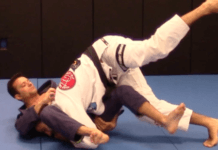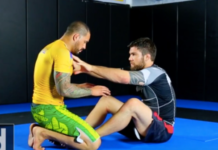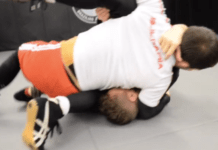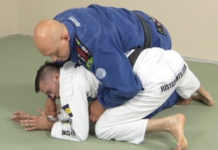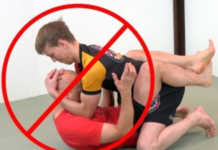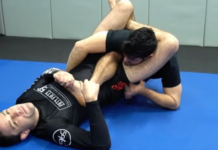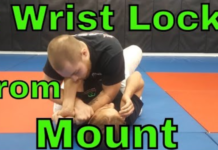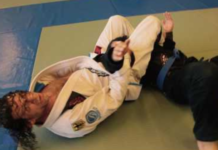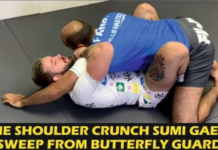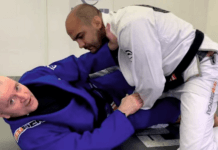BJJ practitioners strive to master the most effective and high-percentage techniques that can lead to victory in competitions. Understanding these submissions and their application is essential for any serious BJJ practitioner seeking to excel on the mat.
Competitions showcase the art’s dynamic nature, where practitioners utilize a combination of grappling, control, and submissions to outmaneuver and defeat their opponents. Within this landscape, certain submissions have emerged as the highest percentage techniques, consistently proving their effectiveness and reliability in securing victories.
In this article, we will delve into the world of these high-percentage BJJ submissions, exploring their intricacies, setups, and the positions from which they are most frequently executed. By studying and integrating these highest percentage BJJ submissions into their training, practitioners can enhance their ability to dominate opponents, secure victories, and progress in their BJJ journey. Remember, the beauty of BJJ lies in its constant evolution and adaptation, and these high-percentage submissions are an integral part of that evolution.
The Highest Percentage BJJ Submissions
5. Kimura
The Kimura submission, also known as ude-garami, is a highly versatile and effective shoulder lock that has become a staple in BJJ competitions. Named after the legendary judoka Masahiko Kimura, this technique allows you to control and manipulate your opponent’s shoulder joint, inflicting significant discomfort and forcing them to submit or risk severe injury.
The versatility of the Kimura lies in its adaptability to various scenarios. Whether you are on top, transitioning, or even caught in a scramble, the Kimura offers an effective means of control and submission. It is important to remember that the key to successfully applying the Kimura lies in the proper control of your opponent’s arm, maintaining leverage, and applying gradual pressure to ensure their compliance.
As with any submission, it is crucial to practice the Kimura technique with a focus on proper form and technique to minimize the risk of injury to yourself and your training partners. Regular drilling and live rolling with the Kimura will allow you to refine your timing, develop a deeper understanding of its applications, and improve your overall effectiveness when executing this high-percentage submission in BJJ competitions.
4. The guillotine choke
The guillotine choke is a versatile submission that can be executed from various positions, including standing or on the ground. It involves trapping your opponent’s head and applying pressure to their neck, targeting their windpipe or carotid arteries.
In the standing guillotine, you control your opponent’s head with one arm and wrap your other arm around their neck, securing a tight grip. By squeezing your arms together and driving your hips forward, you create a compression that restricts your opponent’s breathing or blood flow.
From the guard position, the guillotine choke can be executed by wrapping your arm around your opponent’s neck while controlling their posture with your legs. By adjusting your grip and squeezing, you create a powerful choke that forces your opponent to submit.
3. The Triangle Choke
The triangle choke is a fundamental submission that is highly effective and frequently utilized in BJJ competitions. It is a versatile technique that can be executed from various positions, providing an arsenal of options for both offensive and defensive strategies.
The effectiveness of the triangle choke lies in its ability to cut off the blood supply to the opponent’s brain. When properly applied, the triangle choke puts significant pressure on the carotid arteries, causing the opponent to experience diminished blood flow, dizziness, and ultimately, the need to submit. The combination of the angle created by your legs and the compression applied through squeezing your thighs together ensures a tight and effective choke.
2. The Armbar
The armbar, also known as juji-gatame, targets your opponent’s arm and utilizes leverage and control to apply intense pressure on their elbow joint, forcing them to submit.
The armbar can be executed from various positions, making it a versatile and essential technique in BJJ. One common setup for the armbar is from the guard position. When your opponent is in your guard, you have the opportunity to control one of their arms, usually by gripping their wrist or sleeve. By securing control of the arm, you can then transition to a position where you can hyperextend their elbow joint, exerting immense pressure and creating a strong submission threat.
Another position from which the armbar can be executed is the mount. When you have established the mount position and your opponent tries to bridge or push you off, you can utilize their movements to your advantage. By isolating one of their arms and maintaining control, you can transition into an armbar by extending your hips and applying pressure to their elbow joint.
The armbar can also be executed from side control or even during transitions and scrambles. In these situations, timing and control play a crucial role. By recognizing opportunities when your opponent’s arm becomes vulnerable or exposed, you can quickly transition to secure the armbar position and apply leverage to hyperextend the elbow.
What makes the armbar so effective is its reliance on leverage and joint manipulation. By controlling your opponent’s arm and using your body positioning, you can maximize the leverage on their elbow joint, increasing the pressure and causing immense discomfort. This puts your opponent in a vulnerable position, forcing them to either submit or risk serious injury to their arm if they refuse to tap.
1. RNC
The rear-naked choke is an incredibly effective and high-percentage submission in BJJ. It involves taking your opponent’s back and securing a deep grip around their neck using your arms. Proper positioning and control are crucial for this submission. You want to place your biceps on the sides of your opponent’s neck, ensuring a solid connection. By squeezing your arms and applying pressure, you restrict the blood flow to the brain, causing them to submit or lose consciousness if the choke is not released.
To execute the rear-naked choke, you must first establish back control. This can be achieved by transitioning from the guard, mount, or side control to the back position. From there, secure a deep grip with one arm across your opponent’s throat, and with your other arm, grab the bicep of the choking arm. Maintain control and use your chest and back muscles to apply pressure, gradually increasing the squeeze until your opponent taps or goes unconscious.
Conclusion
In the world of BJJ, mastering the highest percentage submissions is crucial for success on the mat. The rear-naked choke, armbar, triangle choke, guillotine choke, and Kimura represent a selection of the most frequently successful techniques in BJJ competitions. However, it’s important to remember that achieving mastery requires dedicated practice, technical refinement, and an understanding of proper positioning.
As you progress in your BJJ journey, focus on developing a strong foundation in these high-percentage submissions. Additionally, stay updated with the latest training resources, attend seminars, and learn from experienced practitioners to enhance your knowledge and execution of these techniques.
Remember, the effectiveness of these submissions lies not only in their technical execution but also in your ability to adapt and apply them strategically within the dynamic nature of BJJ competition. By honing your skills in these highest percentage BJJ submissions, you’ll have a solid arsenal of techniques to dominate your opponents and achieve success on the competition stage.

